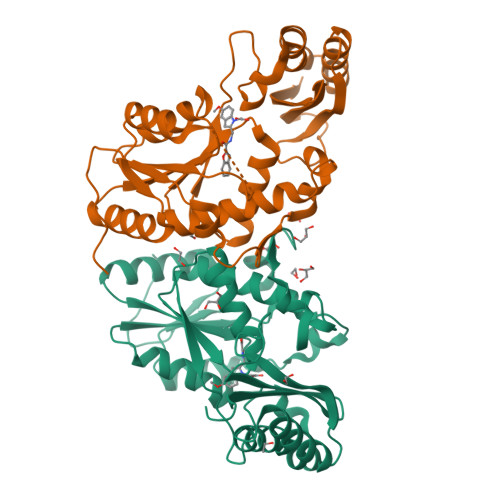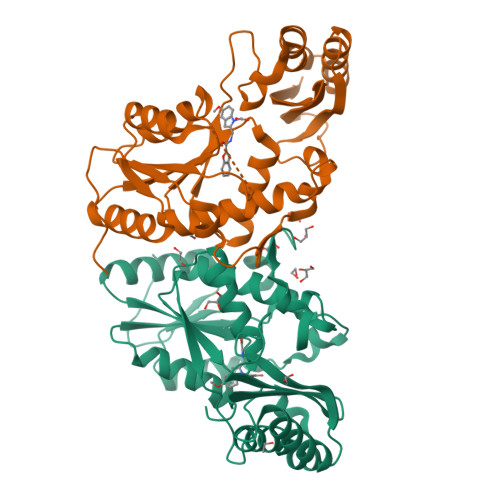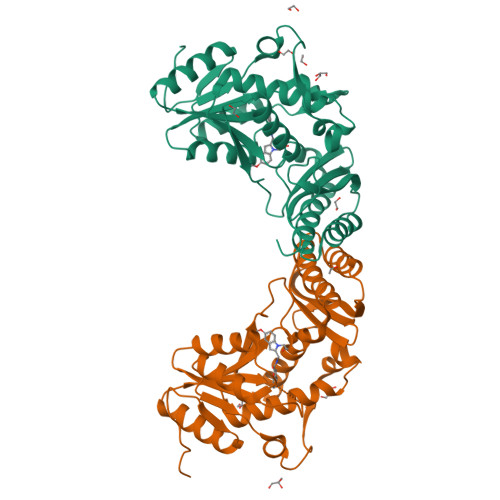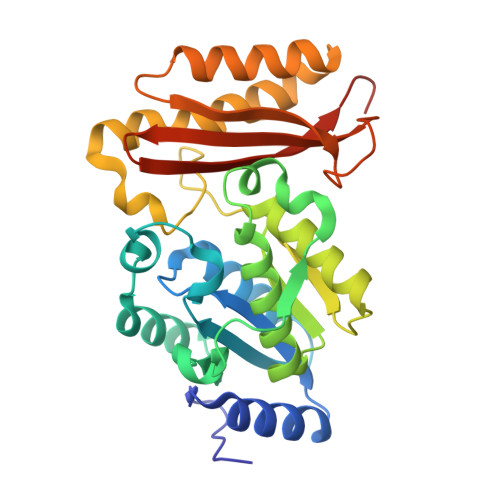Optimization of the interligand overhauser effect for fragment linking: application to inhibitor discovery against Mycobacterium tuberculosis pantothenate synthetase.
Sledz, P., Silvestre, H.L., Hung, A.W., Ciulli, A., Blundell, T.L., Abell, C.(2010) J Am Chem Soc 132: 4544-4545
- PubMed: 20232910
- DOI: https://doi.org/10.1021/ja100595u
- Primary Citation of Related Structures:
3LE8 - PubMed Abstract:
Fragment-based methods are a new and emerging approach for the discovery of protein binders that are potential new therapeutic agents. Several ways of utilizing structural information to guide the inhibitor assembly have been explored to date. One of the approaches, application of interligand Overhauser effect (ILOE) observations, is of particular interest, as it does not require the availability of a three-dimensional protein structure and is an NMR-based method that can be applied to targets that cannot be observed directly because of their size. Fragments, as small and often hydrophobic molecules, suffer from problems including compound aggregation in an aqueous environment and nonspecific binding contributions, especially when screened at higher concentrations suitable for ILOE observations. Here we report how this problem can be overcome by applying a step-by-step iterative procedure that includes the application of optimized probe molecules with known binding modes to elucidate the unknown binding modes of fragments. An enzyme substrate with well-characterized binding was used as a starting point, and the relative binding modes of modified fragments derived from ILOE observations were used to guide the fragment linking, leading to a potent inhibitor of our model system, Mycobacterium tuberculosis pantothenate synthetase, a potential drug target. We have supported our NMR data with crystal structures, thus establishing the guidelines for optimizing the ILOE observations. This model study should expand the application of the technique in drug discovery.
Organizational Affiliation:
University Chemical Laboratory, University of Cambridge, Lensfield Road, Cambridge CB2 1EW, United Kingdom.























